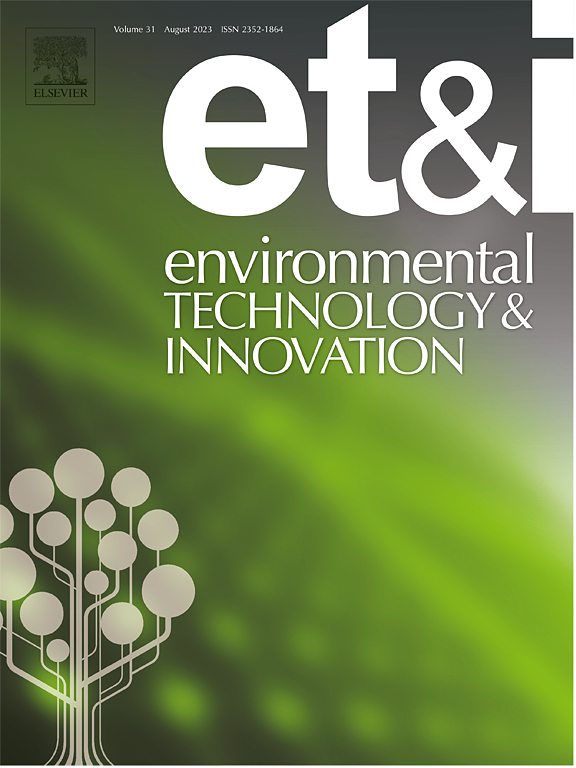Efficient partial denitrification-anammox process enabled by a novel denitrifier with truncated nitrite reduction pathway
IF 6.7
2区 环境科学与生态学
Q1 BIOTECHNOLOGY & APPLIED MICROBIOLOGY
引用次数: 0
Abstract
Partial denitrification coupled with anaerobic ammonium oxidation (PD-anammox) is a promising technology for cost-effective nitrogen removal from wastewater. Nitrite availability is crucial to anammox performance but often limited by the slow partial denitrification process. Here we report an efficient PD-anammox system driven by the novel denitrifier Bacillus velezensis C1–3 with truncated nitrite reduction pathway. Whole-genome sequencing analysis revealed that the lack of nitrite reductase genes nirS/nirK and norBC in strain C1–3 enabled nitrite accumulation without the need for precise control of carbon dosage. By coupling it with anammox sludge, over 79 % total nitrogen (TN) removal was stably achieved, under a TN loading rate of 660 mg/L/d and a carbon/nitrogen ratio below 1.0. Mechanism explorations indicate that the niche differentiation of C1–3 and anammox bacteria facilitated their mutualism while avoiding nitrite competition. This study demonstrates a novel strategy for establishing efficient PD-anammox process by harnessing the unique metabolic deficiency of denitrifiers, shedding light on the development of stable and sustainable biological nitrogen removal technologies with minimal carbon footprint.
具有截断亚硝酸盐还原途径的新型反硝化器实现了高效的部分反硝化-氨氧化过程
部分反硝化与厌氧氨氧化(PD-anammox)相结合是一种具有成本效益的废水脱氮技术。亚硝酸盐的可用性对厌氧性能至关重要,但往往受到缓慢的部分反硝化过程的限制。在此,我们报告了一种高效的部分反硝化-anammox系统,该系统由新型反硝化杆菌(Bacillus velezensis C1-3)驱动,具有截短的亚硝酸盐还原途径。全基因组测序分析表明,菌株 C1-3 中缺少亚硝酸盐还原酶基因 nirS/nirK 和 norBC,因此无需精确控制碳用量即可实现亚硝酸盐积累。通过将其与厌氧污泥耦合,在 TN 负荷率为 660 mg/L/d 和碳氮比低于 1.0 的条件下,总氮(TN)的去除率稳定在 79% 以上。机理探索表明,C1-3 和厌氧菌的生态位分化促进了它们之间的互利关系,同时避免了亚硝酸盐竞争。这项研究展示了利用反硝化菌独特的代谢缺陷建立高效的 PD-anammox 过程的新策略,为开发碳足迹最小的稳定、可持续生物脱氮技术提供了启示。
本文章由计算机程序翻译,如有差异,请以英文原文为准。
求助全文
约1分钟内获得全文
求助全文
来源期刊

Environmental Technology & Innovation
Environmental Science-General Environmental Science
CiteScore
14.00
自引率
4.20%
发文量
435
审稿时长
74 days
期刊介绍:
Environmental Technology & Innovation adopts a challenge-oriented approach to solutions by integrating natural sciences to promote a sustainable future. The journal aims to foster the creation and development of innovative products, technologies, and ideas that enhance the environment, with impacts across soil, air, water, and food in rural and urban areas.
As a platform for disseminating scientific evidence for environmental protection and sustainable development, the journal emphasizes fundamental science, methodologies, tools, techniques, and policy considerations. It emphasizes the importance of science and technology in environmental benefits, including smarter, cleaner technologies for environmental protection, more efficient resource processing methods, and the evidence supporting their effectiveness.
 求助内容:
求助内容: 应助结果提醒方式:
应助结果提醒方式:


